


The connection between digital art and tradition always generates new and exciting perspectives. This time, we are in Florence, a historic city with a fascinating heritage. Blessed to live in this city, breathe its brightness and walk through its colours every day, we dressed Florence in a different, modern, unusual outfit.
To do so, we worked on a special project with the creative touch of our mentor Andy Picci, a digital artist who produces art that is sharp and playful at once. He examines the effects of digitalisation on society and identity by challenging the methods of creating, communicating, and exhibiting digital art. Now he’s with us for Re:mixing the city.
Curated by Arts Curating students Marines Salcedo Gutierrez, Sabrina Morales Echart and Cosima Zhu, the project uses the physical world through the digital lens of Augmented Reality.
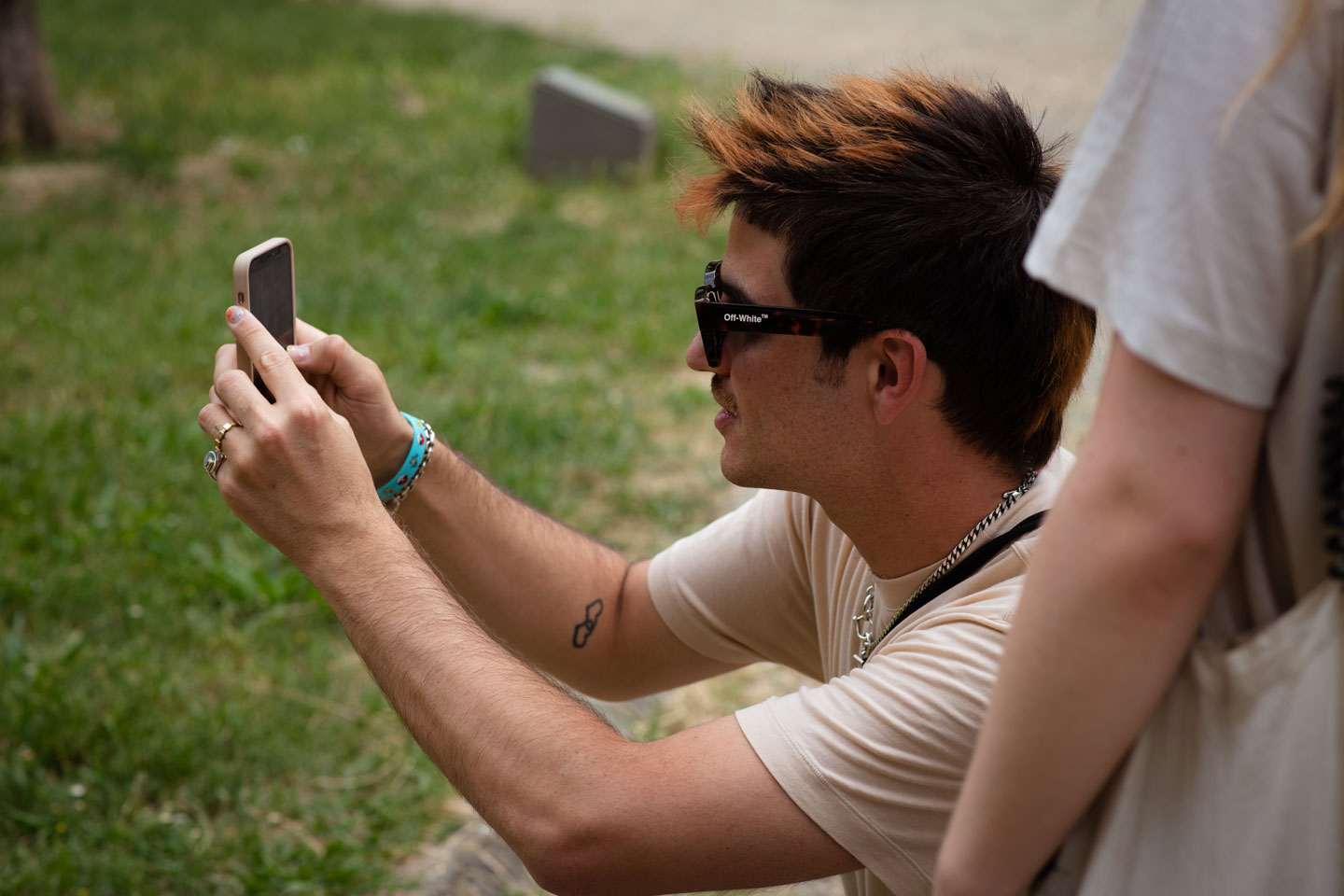
Re:mixing the city explores Florence’s iconic landmarks, chosen for their relationship to the history of fashion, to install digital sculptures by Multimedia Arts students through AR filters on Instagram.
We sat down for a chat with two artists, Francesco Agazio (https://imfirenzedigest.com/artists/francesco-agazio-chiesa-di-orsanmichele/) and Sofie Engelschiøn (https://imfirenzedigest.com/artists/sofie-engelschion-giardino-di-boboli/), both students at Istituto Marangoni, who took part in the project and told us about their point of view.
Let’s talk about Re:mixing the City. Can you guys tell us about this unique project in a few words?
Sofie Engelschiøn & Francesco Agazio: Imagine it as a digital activity whose aim was to give a new life to the most prominent buildings in our city centre by using augmented reality – a chance to see this beauty in a new way. Florence is filled with beautiful architecture and ancient artworks. We all chose a place we felt connected to in some way, so our works reflect a personal connection and observation of the space. We believe we have created new modern pieces of art based on our vision of these places and their historical context.
What impressions did you have when you met Andy Picci for the very first time?
S.E: Working with Andy was truly amazing. He is such a kind and inspiring person. He is very sharing, and what impressed me the most was that if he didn’t know the answer to something, he would take the time to sit down with us and work out a solution together.
F.A: I had already had the chance to meet him during a masterclass at Istituto Marangoni – he was explaining the world of Instagram filters. So, I knew he was a kind and generous human being; during this project, I was excited to have him as a mentor and looked forward to working with him.
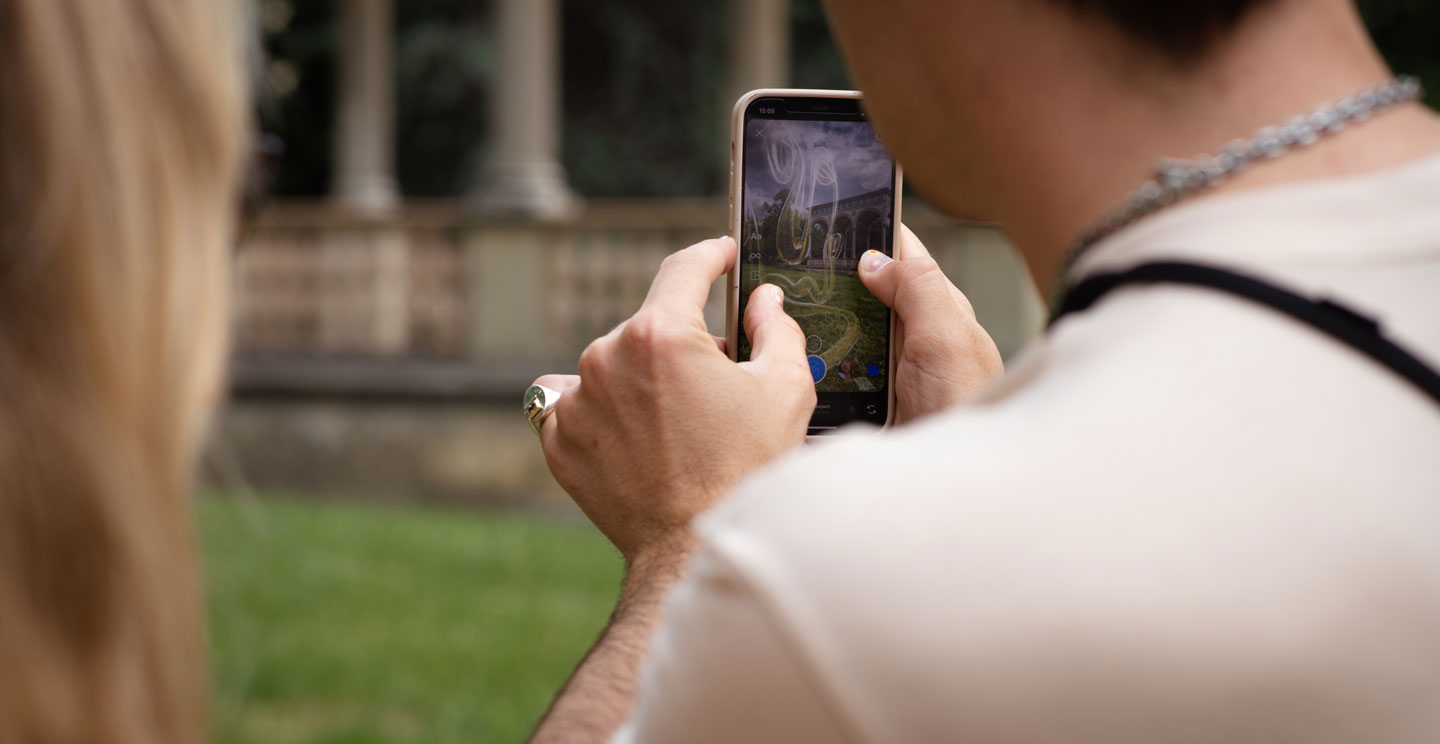
What skills and emotions did Andy Picci share with you? Did you feel involved in your feelings as well as in the professional work you were doing together?
S.E: He made me realise that bringing your vision to life sometimes takes a long time and many attempts before you get to the right solution, but you have to keep going no matter what. Above all, I really appreciated him spending so much time with each of us to understand our specific project challenges. No two artworks are the same and you have to look at them differently to get the best result.
F.A: He’s a lovely person and a master at the same time. I admire his way of working, kindness and patience in helping us finalise our filters. I also highly appreciate his problem-solver attitude; he managed to find a solution when there was apparently nothing to be done.
Do you remember a somewhat surprising moment during the project?
S.E: At the beginning of the project, when I pitched my idea to Andy, he told me that working with transparent materials was really hard and almost impossible to make them look as realistic as I wanted. But I am always up for a challenge; I knew I could make it work and achieve a realistic result with his help, and I think we succeeded. It was definitely something to try and fail, and things that should have worked didn’t work, so it was a matter of manipulating the material to make it work the way we wanted it to look, but I think the outcome was impressive in the end.
F.A: I remember a pretty funny story during the last part of this mentorship: I was finalising my animations for the filter, and for the first time, everything worked, so my 3D mentor and I were ecstatic, especially because the result was cool. Then the only thing I had to do was export everything from Blender to Spark AR (which is the programme you can use to create your filter); when I loaded all the stuff, I realised that Spark AR could not support the animations of my filter. I remember I felt like crying because I had just thrown this all away, but luckily Andy and my 3D found a solution, so I was relieved in the end.
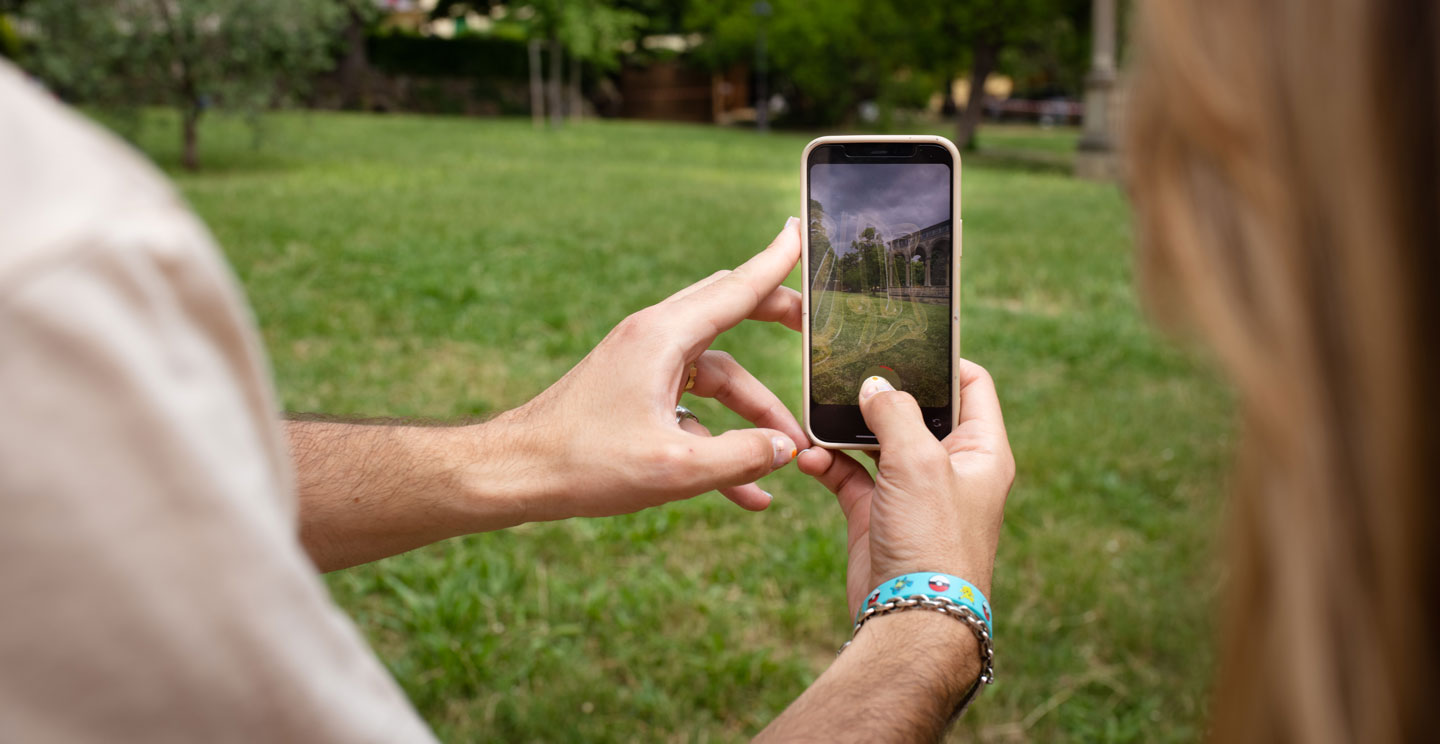
What about this connection between art, architecture and the digital world?
S.E: I feel the connection between art, architecture and digital art is merging more and more today. People no longer just see the artwork for artwork’s sake; everything around us has to make us feel something, whether it is a building, social media or a museum. The world has become an exhibition space, and I am happy we have been able to step into it through VR and AR technologies. I think it is more meaningful for people to see the world as we want to see it and not just in a practical way.
F.A: I think art, architecture and digital work well together – The Orsanmichele church building was one of the inspirations for my filter. If I extend my vision by talking about digital art, well, this is something I have to work on because that’s the future, and you can make your art accessible to everyone if you can upload it on their devices.
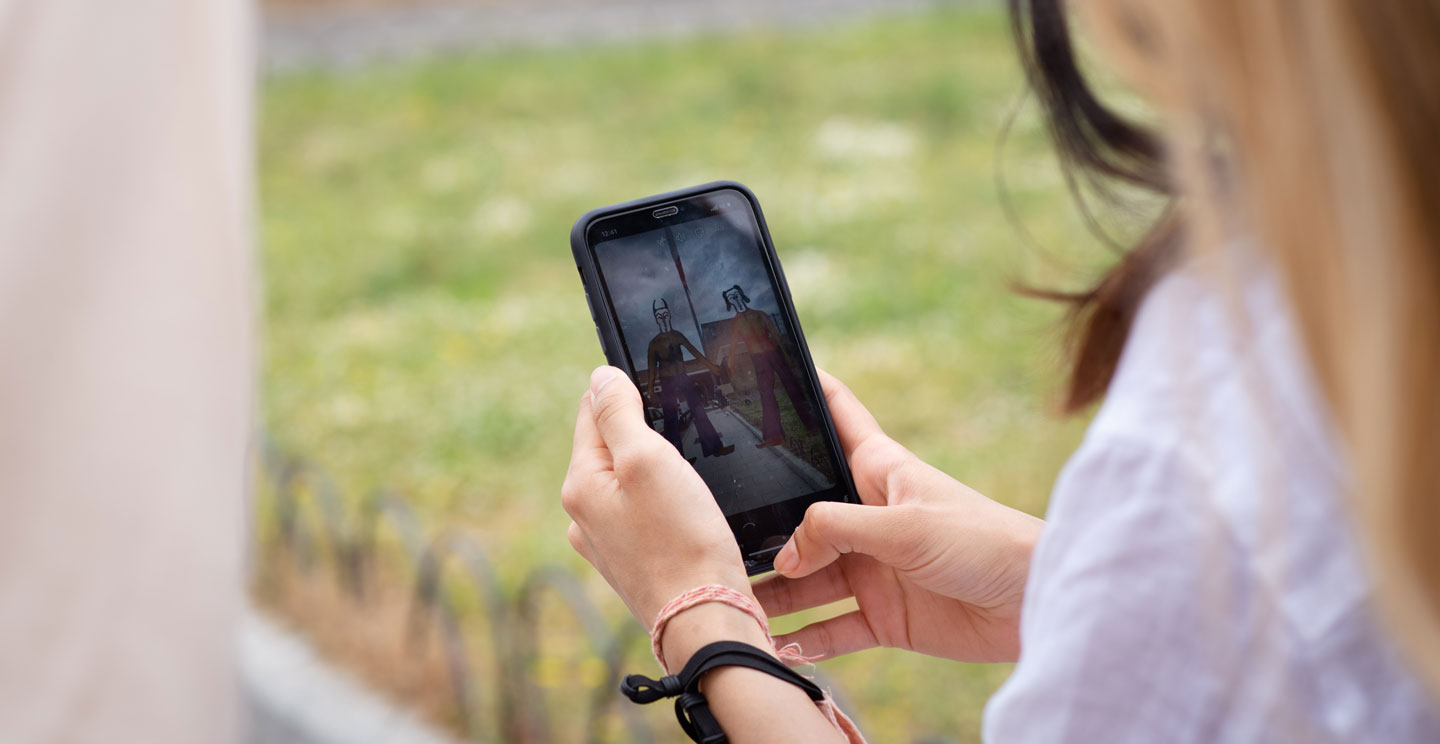
What about living and studying art in a city like Florence?
S.E: I love studying art here in Florence, and I would not imagine starting my art career in any other city. Not only are you surrounded by masterpieces in every corner, but also the people of Florence are genuinely interested and inspiring. Everyone has an opinion about art, and the conversations and all these different points of view are something I will bring with me forever.
F.A: Living in Pisa, I feel Florence as a breath of fresh air. Every time I come, I see new exciting (and most likely hidden) places I hadn’t noticed before. At the same time, I am surrounded by art here, so the connection between past, present (and who knows, maybe future) is really strong – you can create anything you want even just by looking at an ordinary building in the city centre.
How was the Istituto Marangoni’s end-of-year fashion & art show hosted at Museo Marini?
S.E: It was such a fabulous show this year! It featured many different artworks and clothing styles. I think the whole concept suited our times, and everything, from styling to lighting, screens and music, was so well put together. Overall, I really enjoyed it.
F.A: The school fashion show was amazing; I found all the designs intriguing and cool from different points of view. I loved the collaboration between fashion and art, and here we proved that fashion and art are always connected.
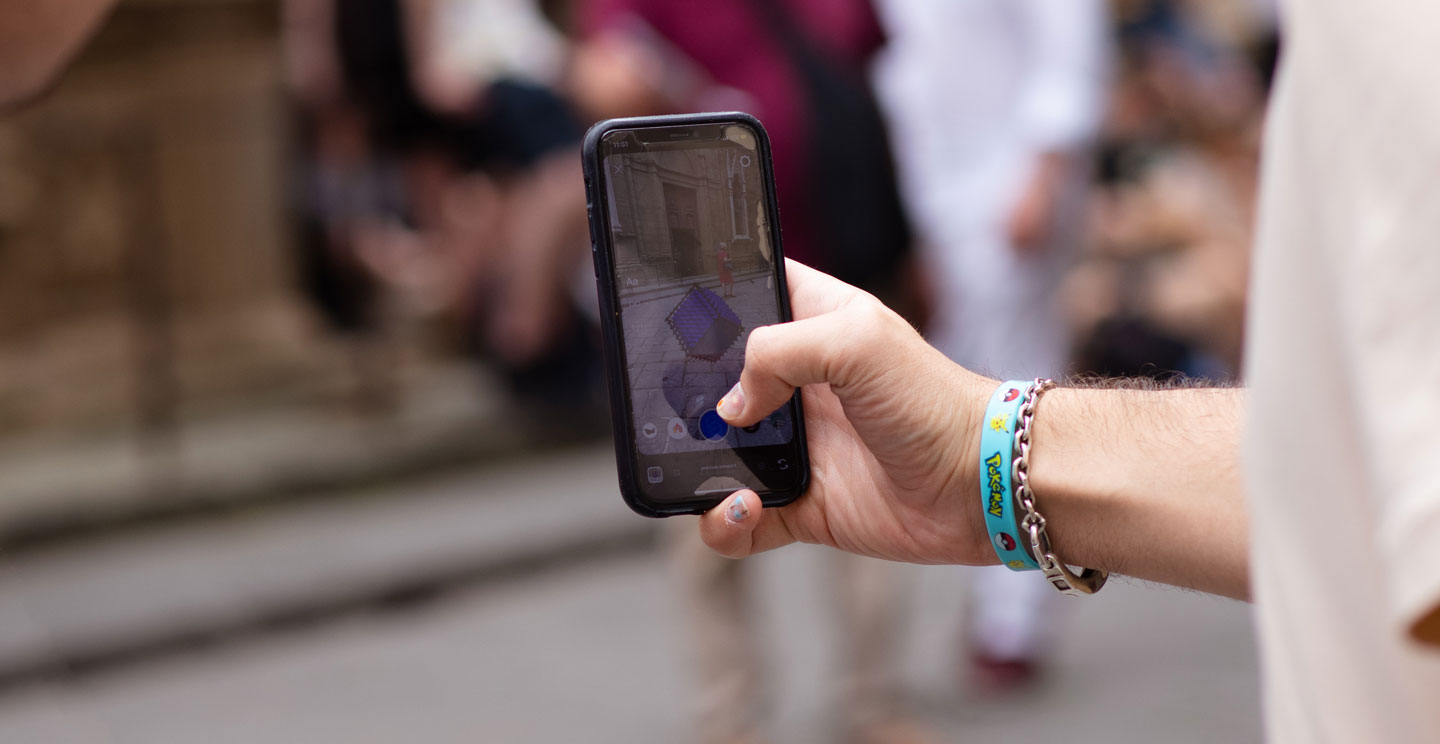
Projects for your future?
S.E: The year 2022 is full of inspiring projects: I will be part of a digital exhibition with MOCDA in July. Then I will exhibit some of my paintings in Oslo, Norway, in September. In the meantime, I hope to explore and make more digital and physical art.
F.A: Well, I definitely want to go deeper into 3D design because it’s a medium I enjoy immensely, but at the same time, I want to gain experience in fashion because it’s another thing I love, as I may be starting an internship with an Italian brand. Then there’s the Fendi Dis-cycling project which will go on until October. So, I have a pretty busy summer, I would say.
Ginevra Barbetti
Tutor in Digital Communication, Journalism and Storytelling, Florence



